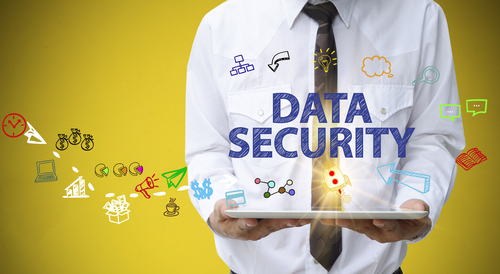Cybersecurity has become an integral part of the industry, and the healthcare sector is no exception. In fact, you can argue that it is particularly essential for healthcare because people?s lives literally depend on it. The speed of information exchange and the accessibility of data is what makes digitalization so compelling but it also comes with its own can of worms: anybody with the right tools can access and wield this information. Since these are the inescapable conditions of the modern world, healthcare organizations should prioritize the improvement of data security in every conceivable way.
Set up layers of access
If you want to secure the cyberspace of your healthcare organization, you need to think in terms of layers – imagine your cloud as the castle that is protected with concentric walls. The physical computing power should be kept behind doors which require security cards, every program should be accessed with the login by the employee and all of the hotspots of the facility should be monitored with cameras. These days, all of these aspects factor into the same system, the internet of things has enabled us to synergize networks, and this is only the beginning.
Go beyond usual suspects
There is a reason why each branch of industry needs a versatile IT sector – the managers of healthcare facilities are not exactly tiptoeing on the cutting-edge of cybersecurity standards. While they may be familiar with concepts such as antivirus, VPN, device management and encryption – the usual suspects – they should only be the foundation upon which the true walls are built.In order to increase the resilience of your systems, you have to go even beyond the aforementioned layers of access and set up real-time monitoring which increases visibility and tighten the control of endpoints – computers, laptops, tablets, and phones. In this regard, unfortunately, portable devices have become quite a liability due to their ubiquity.
Protect each portable device
Ideally, moving all the paperwork online places all of the requisite information into an encompassing virtual space, thus rendering the access to medical records simplified and efficient. This incorporeal quality of the documentation may create an illusion that the information is more elusive and safer. However, we tend to forget that each physical device – be it a BYOD smartphone or a tablet, is an actual physical window into this wealth of information.Because of this, all reasonable companies are looking for the next app in data protection evolutionary chain which can take the encryption and bring it up a few notches. The latest trend in this field is to use the app that will not only keep your device encrypted but also help you track down the perpetrators and, as it stands, this has proven to be the most effective response to smartphone larceny. This is what control over endpoints is all about.
Frequent (physical) checkups and audits
However, amidst all the managerial chaos, it is not inconceivable that an employee or a group of employees fail to notice if a device has gone missing before the annual IT audit. This is why a simple and very concrete solution such as frequent audits can actually improve the cybersecurity of an organization. This may not be the most elegant solution, but it is reliable and it can increase cybersecurity. The software is not an answer to all digital woes.
Evaluation and response in real-time
Security cards, tokens, logins, and personal nicks and passwords create a network of physically and digitally intertwined information that can – and should – be tracked and evaluated by the healthcare facility?s designated computers 24/7. This will not only keep everything on record but also bring an additional upside to the cybersecurity table: it will reveal the vulnerabilities – and the IT sector can patch them up long before anyone has even tried to breach the data.
Conclusion
As the pillar of civilization known as healthcare moves its administrative and operational capacity into the cloud, the cyber risks are becoming an evident risk factor. Breaches into healthcare data have become something of a commonplace lately, which is a discouraging notion. The far-reaching consequences of this are dire – the financial implication and the breach of privacy being the leading ones. As it stands, the cybersecurity in healthcare evolves through the feverish race between the hacking doctrines and the ever-expanding firewall protocols. The trick is to stay ahead of the curve.









